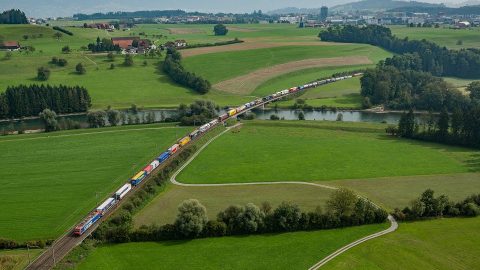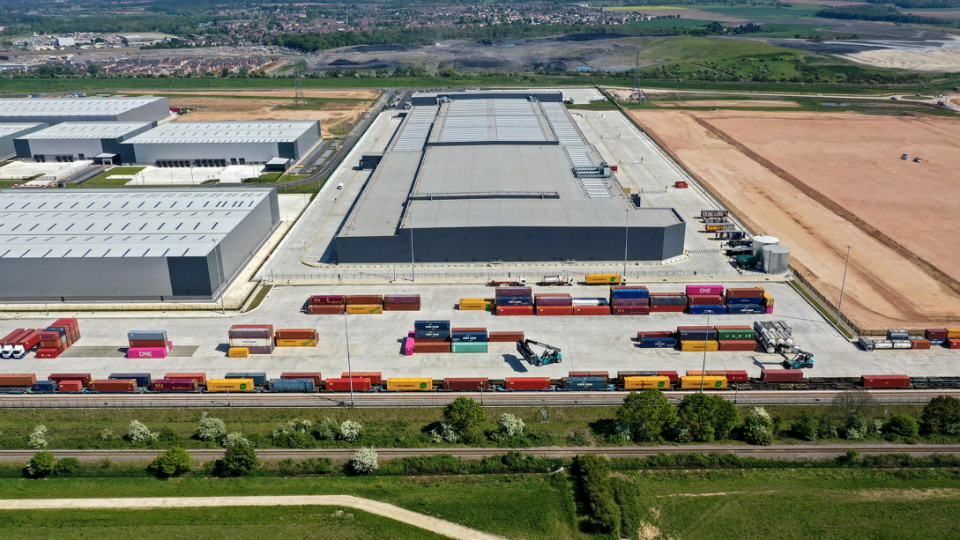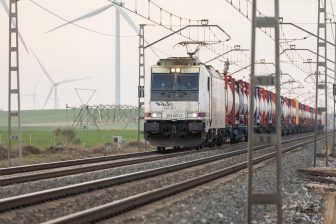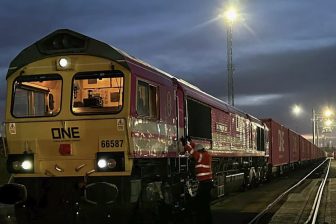
Economy and environmental future in the hands of rail freight
There is renewed cause for optimism, and potential for a period of significant growth on the rails in the UK. This is the opinion of Julian Worth, chair of the Chartered Institute of Logistics and Transport’s Rail Freight Forum and with forty-years experience in the rail freight industry.
As managing director of Transrail Freight, an operation spun out of the former British Railways, and then as marketing director with the ambitious English Welsh & Scottish Railways, Worth has had a high-level view of Britain’s railways, as they transitioned from public to private enterprise in the 1990s. He says the industry is close to scoring a significant uplift in fortunes.

Reshape the railways
“There is a conjunction of circumstance, stacked up in favour making rail freight the environmental and economic driver for British industry”, says Worth, as he spoke to RailFreight.com between a busy diary of industry and stakeholder meetings in London.
“We are awaiting the publication of the Williams Report, which will reshape the way the railways work in the UK. If the report delivers, it will pave the way for more efficient use of the available national resource represented by the railway network. We are moving towards legislation that will require us to become a net-zero carbon economy, and we are seeing an ever worsening shortage of heavy goods vehicle drivers. All of these factors mitigate towards a growing rail freight sector”.
Recovery and modern facilities
Currently, Worth believes, the rail freight sector has done very well to grow under prevailing circumstances. Withstanding the demise of some traditional flows, Worth says we have a fast growing freight railway, that is well positioned to benefit from a long period of economic suppression, not least engendered by the Brexit uncertainty being largely removed. Worth points to the potential in consumer goods and construction bulk cargo.

“We are seeing a growing problem of road congestion, which is particularly acute for freight operators who try to move increasing volumes out of the coastal ports”, says Worth. “Moving boxes from quayside to inland ports, which are co-sited with commercial warehousing, not only solves that problem, but also fundamentally reduces the cost of getting the contents of those boxes to market. The ability to shunt boxes from an on-site rail terminal to the warehouse, avoiding public roads, is calculated to reduce the cost of transporting the box from port to warehouse by around thirty-five percent”.
Construction a pointer to growth
Worth points to the success of strategic rail freight interchanges like East Midlands Gateway, which has had two trains arriving daily since its opening; and iPort Doncaster, which he says is full with seven trains daily in just fifteen months. “There are five or six more strategic rail freight interchanges in the pipeline”, he says. “That would take the rail-connected warehousing to over 50m sqft (4.6 million square metres)”.
“Twenty-seven percent of cargo is construction materials”, he says. “That is a figure that is going to grow for all the right reasons. Sources of materials nearby urban centres, where the majority of projects are located, are exhausted, or are environmentally unacceptable to exploit. A small number of isolated, very large quarry sites, served by rail, are providing the loads for trunk distribution by rail”.
Radical change
Worth observes that the construction sector is well served by rail, which provides the long haul for heavy raw materials. “The average construction truck mixers delivering concrete in major cities like London often operate within a five mile radius of the railhead concrete plant. Rail is doing the heavy lifting and, as the construction industry rediscovers its own optimism, it is going to feed into the optimism for rail freight. I genuinely do think we are on the cusp of a rail freight boom”.
Suggesting that relatively few people make the decisions about the future of industry and the freight sector, Worth says it would not take many to review their planning in order to radically change the face of freight in favour of rail. Given his contacts, and busy diary of meetings with influencers, Worth is playing his part in fulfilling that prophecy.




